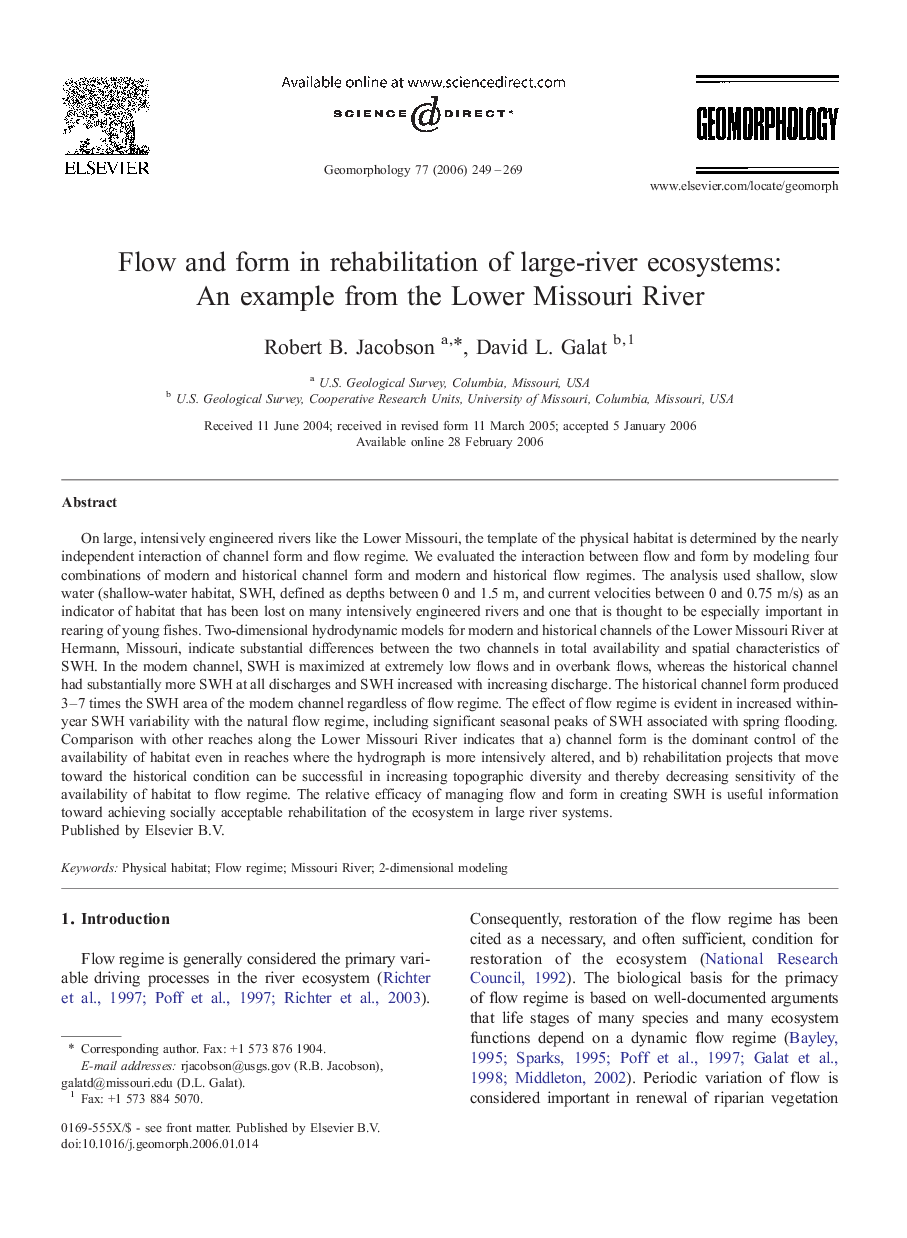| کد مقاله | کد نشریه | سال انتشار | مقاله انگلیسی | نسخه تمام متن |
|---|---|---|---|---|
| 4687521 | 1635597 | 2006 | 21 صفحه PDF | دانلود رایگان |

On large, intensively engineered rivers like the Lower Missouri, the template of the physical habitat is determined by the nearly independent interaction of channel form and flow regime. We evaluated the interaction between flow and form by modeling four combinations of modern and historical channel form and modern and historical flow regimes. The analysis used shallow, slow water (shallow-water habitat, SWH, defined as depths between 0 and 1.5 m, and current velocities between 0 and 0.75 m/s) as an indicator of habitat that has been lost on many intensively engineered rivers and one that is thought to be especially important in rearing of young fishes. Two-dimensional hydrodynamic models for modern and historical channels of the Lower Missouri River at Hermann, Missouri, indicate substantial differences between the two channels in total availability and spatial characteristics of SWH. In the modern channel, SWH is maximized at extremely low flows and in overbank flows, whereas the historical channel had substantially more SWH at all discharges and SWH increased with increasing discharge. The historical channel form produced 3–7 times the SWH area of the modern channel regardless of flow regime. The effect of flow regime is evident in increased within-year SWH variability with the natural flow regime, including significant seasonal peaks of SWH associated with spring flooding. Comparison with other reaches along the Lower Missouri River indicates that a) channel form is the dominant control of the availability of habitat even in reaches where the hydrograph is more intensively altered, and b) rehabilitation projects that move toward the historical condition can be successful in increasing topographic diversity and thereby decreasing sensitivity of the availability of habitat to flow regime. The relative efficacy of managing flow and form in creating SWH is useful information toward achieving socially acceptable rehabilitation of the ecosystem in large river systems.
Journal: Geomorphology - Volume 77, Issues 3–4, 30 July 2006, Pages 249–269